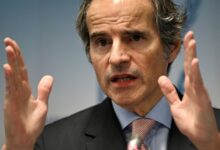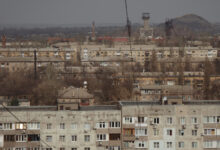
The idea of a “Greater Eurasia” economic framework may become Russia’s top diplomatic goal, he says

FILE PHOTO. Russian President Vladimir Putin, left, shakes hands with Chinese President Xi Jinping, right. ©Kenzaburo Fukuhara / Pool via Getty Images
The promotion of free trade and regional integration across greater Eurasia may become a priority for the Russian Foreign Ministry for years to come, says Aleksey Drobinin, who is a senior strategist.
The idea behind the so-called Greater Eurasian Partnership (GEP) is to foster economic relations between nations without interfering with their domestic policies. It would serve as “a framework contour for economic integration and security, which would be open for all nations and organizations on the continent,” according to Drobinin.
He heads the department in the foreign ministry responsible for academic research and strategic planning. He outlined changes to the foreign policy concept, a document that defines Russian goals and methods on the world stage.
“Its added value would be the harmonious conjunction of integration projects, national development strategies, chains of production and logistics and energy transport corridors,” he wrote in a keynote article.
GEP was first proposed by President Vladimir Putin in 2015. He promoted its merits in late May as he was addressing the leaders of the Eurasian Economic Union, a regional integration body that includes several former Soviet republics.
READ MORE:
Cooperation with the West is over – Russia
Putin called GEP “a big civilizational project” meant to “change the political and economic architecture of the entire continent, become a safeguard of stability and prosperity that would account for the diversity of development models, cultures and traditions of all peoples.”




